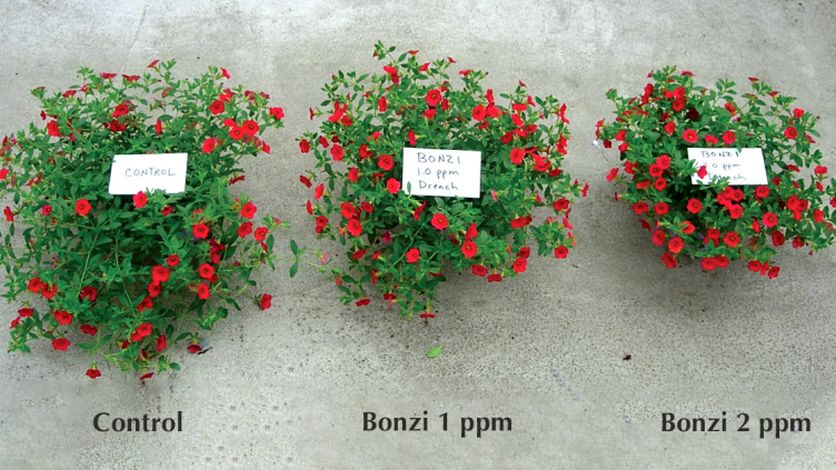Tips on Getting the Most Out of Plant Growth Regulators

Growth control with Bonzi drench treatments on calibrachoa; Photo: Lang, Syngenta photo; 2005
Incorporating a plant growth regulator (PGR) in your greenhouse operation helps ensure strong, attractive crops by the time they reach the end consumers. PGRs differ by active ingredients, application rates, and methods, so understanding how to select and use one effectively in your operation is critical for achieving the desired effects.
Before selecting the PGR for your operation, be sure to establish your goals, because different active ingredients provide different results.
To limit shoot growth and maintain compact plants, use PGRs with active ingredients such as paclobutrazol, ancymidol, daminozide, flurprimidol, and uniconazole. These active ingredients target and inhibit gibberellin production, which is responsible for stem elongation. Active ingredients that are plant hormones, including gibberellins and benzyladenine, affect plant development such as plant flowering or branching.
When it comes to application times and rates for products like Bonzi plant growth regulator, guidelines to remember include:
- Crops grown in moderate-to-warm climates typically require lower application rates than those grown in hot and humid climates.
- Taller, more vigorous varieties typically require a higher application rate than the naturally short, less vigorous varieties.
- Younger, smaller plants of the same species will respond differently than older, larger plants even though volume and pot size may remain the same.
- Remember to only apply to plants that are not under stress.
- The growing medium should be moist for even PGR application for each plant.
Learn more in this post from Syngenta on GreencastOnline.com.








